USC’s freshman class sets records for diversity, academic achievement
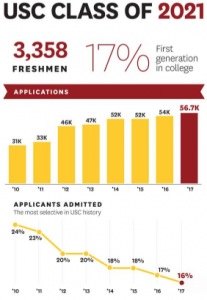 With the highest average test scores in history, the class of 2021 brings USC’s biggest cohort of first-generation scholars and students of color
With the highest average test scores in history, the class of 2021 brings USC’s biggest cohort of first-generation scholars and students of color
Contact: Ron Mackovich, (213) 810-8583 orrmackovi@usc.edu
This year’s freshman class is among the highest achieving ever enrolled at USC, and includes the greatest percentage of first-generation college students the university has ever recorded.
This fall, the Trojan Family welcomed 3,358 freshmen — 16.7 percent of whom are first generation college students, according to statistics released by the USC Office of Admission.
The university also is seeing an increase in ethnic diversity. Almost two-thirds of the class of 2021 are students of color, including African-Americans, Asian-Americans, Latinos and students of multiple ethnicities.
“We’re not only increasing our academic metrics, we’re also increasing our number of underrepresented minority students,” said Timothy Brunold, USC’s dean of admission.
USC’s first-year admission rate hit a record low 16 percent, taking the university to a new level of selectivity. A record 56,675 applications were received.
An exceptional group of learners
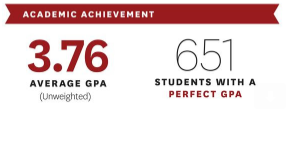 The class distinguishes itself with the highest average test scores in USC history. The average test score was in the 96th percentile, versus last year’s, which was in the 95th. Nineteen percent of this year’s freshman class earned straight A’s throughout high school. Their average unweighted GPA is 3.76 on a 4.0 scale — and well over 4.0 if weighted.
The class distinguishes itself with the highest average test scores in USC history. The average test score was in the 96th percentile, versus last year’s, which was in the 95th. Nineteen percent of this year’s freshman class earned straight A’s throughout high school. Their average unweighted GPA is 3.76 on a 4.0 scale — and well over 4.0 if weighted.
Despite the impressive statistics, academic scores were not the primary criteria used for admission. Brunold said the university is seeking outstanding students who are motivated, critical thinkers intent on solving problems in their communities and the world.
“We’re building a class,” he said. “It’s a human process. Although we’re impressed with our students’ academic achievements, these are not their only strengths. They are curious, engaged, voracious learners, and that’s the group we set out to bring together.”
For the first time, 560 freshmen honors students are housed at the new McCarthy Honors Residential College. McCarthy is one of eight residential colleges at USC Village, a $700 million mixed-use development that opened in August.
Foshay sends most freshmen – again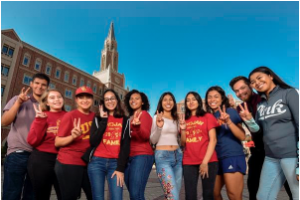
For the second year in a row, Foshay Learning Center in South Los Angeles is the most represented high school in USC’s freshman class.
The 21 students are the most ever from Foshay to start their college careers at USC. The campus is less than a mile from their high school, which hosts USC’s Neighborhood Academic Initiative in partnership with the Los Angeles Unified School District.
The NAI program is a pre-college enrichment program for South and East Los Angeles students. Of the nearly 1,000 students who have completed the program, 86 percent have enrolled as freshmen at four-year universities. More than a third of them have enrolled at USC.
Making a USC degree affordable
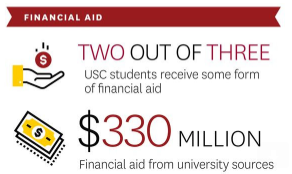 The university increases funding for financial aid each year, and the net cost of a USC education has dropped for a considerable number of students.
The university increases funding for financial aid each year, and the net cost of a USC education has dropped for a considerable number of students.
“Our commitment to our students can be seen in the robust financial assistance we offer — and in the declines in the net price of tuition many of them pay,” said Provost Michael Quick. “In four years, the net price of tuition has dropped nearly 14 percent for those whose families earn between $75,000 and $110,000. That’s a strong signal of our support to our students — financially as well as academically. This is a commitment that we honor and will work to maintain.”
With one of the most abundant financial aid pools in the country, USC provides more than $330 million in scholarships and aid. About 22 percent of the 2017 entering first-year class received a merit-based scholarship from USC, and over 60 percent received some form of financial assistance.
USC practices need-blind admission, meaning a student’s ability to pay is not considered in the admissions process and all demonstrated need is met.
All states and many nations
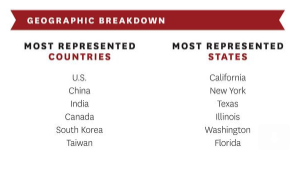 The class has at least one student from all 50 states. The majority, 41 percent, are from California, followed by New York (4.2 percent), Texas (3.5 percent), Illinois (3.1 percent) and Washington (2.9 percent). Several notable geographic areas, including the Bay Area, New York City and Washington, D.C./Baltimore, sent more first-time students to USC than ever before.
The class has at least one student from all 50 states. The majority, 41 percent, are from California, followed by New York (4.2 percent), Texas (3.5 percent), Illinois (3.1 percent) and Washington (2.9 percent). Several notable geographic areas, including the Bay Area, New York City and Washington, D.C./Baltimore, sent more first-time students to USC than ever before.
Nearly 14 percent of this year’s class are international students — among the largest in USC’s history. The 462 students represent 46 countries. Most are from China, followed by India, Canada, South Korea and Taiwan.
